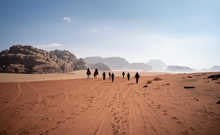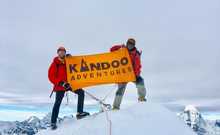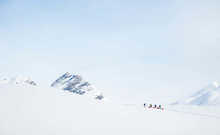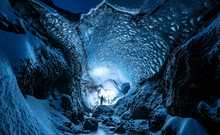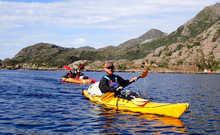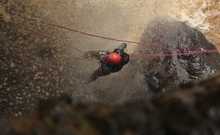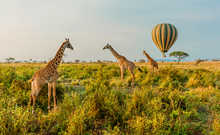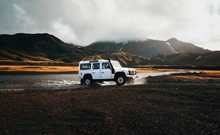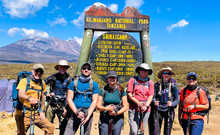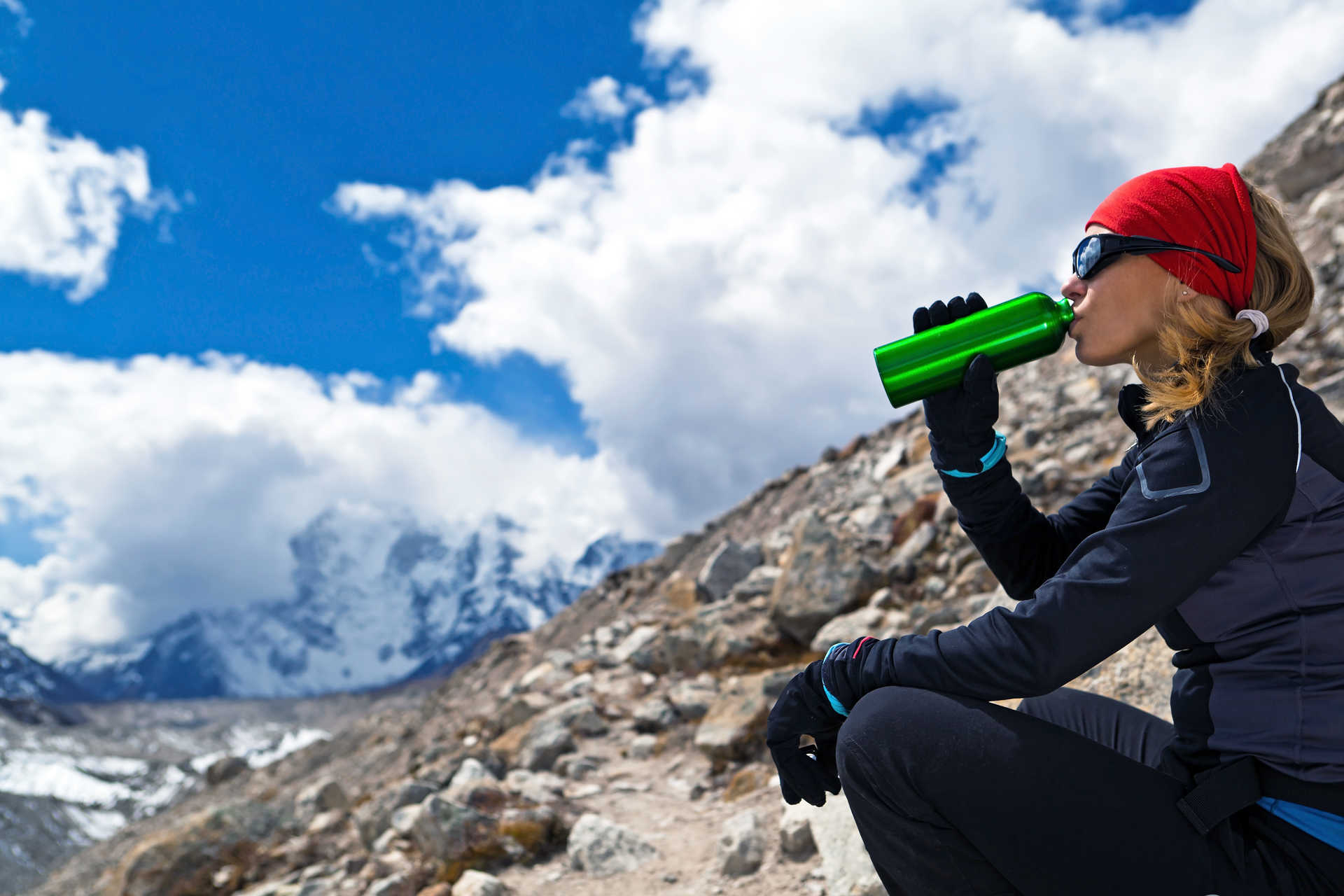Why Nutrition Matters on a Himalayan Trek
As the highest country in the world, and almost entirely covered by the Himalayan mountains, trekking in Nepal isn’t for the faint-hearted. As well as being rewarded with some of the most astounding scenery in the world, your body will be put to the test with constantly changing terrain, high altitude, and dramatic weather shifts. For most, these challenges are a welcome part of the experience, and researching what to expect while trekking the Himalayas is pretty standard. Unless you’re a seasoned nutrition expert or have completed numerous treks of a similar nature, part of that research should include food in Nepal, the best snacks for hiking, what to eat while trekking in the Himalayas and how to prevent altitude sickness by eating and drinking sensibly. When trekking at altitude, your body has to work harder than it does at sea level. That’s why what you eat and drink matters more than you might think.
At altitude, your body burns more calories just to maintain basic functions, let alone tackle long hiking days with a heavy pack. Depending on individual factors like weight, fitness level, intensity and duration of the trek, as well as altitude and terrain, you could be burning anything from 3,000 to 10,000+ calories per day. To maintain your energy and avoid fatigue or muscle breakdown, and support your acclimation to high altitude, your meals should be calorie-dense and consistent.
Higher elevations mean thinner air, reduced oxygen, and often reduced appetite. A surprising number of trekkers report not feeling hungry, especially above 3,000 meters, yet failing to eat enough can lead to weakness, poor sleep, and an increased risk of altitude sickness.
It’s easy to become dehydrated in the mountains, especially when it’s cold and you don’t feel thirsty. Add in dry air, sweating, and frequent urination at altitude (a natural response to lower oxygen), and you're quickly at risk of dehydration - another major trigger for altitude sickness. Aim for 3-4 litres of water per day, more if you're trekking in hot sun. Incorporate electrolytes to replace lost salts and improve water absorption.
Not eating or drinking enough increases your vulnerability to:
- Headaches
- Nausea
- Dizziness
- Slower acclimatisation
- Decreased decision-making ability
Proper nutrition may not guarantee you immunity from altitude sickness, but it can play a crucial role in how your body adapts and functions at elevation - supporting energy levels, aiding recovery, and contributing to an overall wellness that often remedies altitude sickness before it escalates. Below, we go into more detail about the best high altitude diet, the best hiking food, high energy snacks, and the Nepalese food you can take advantage of during your stay.
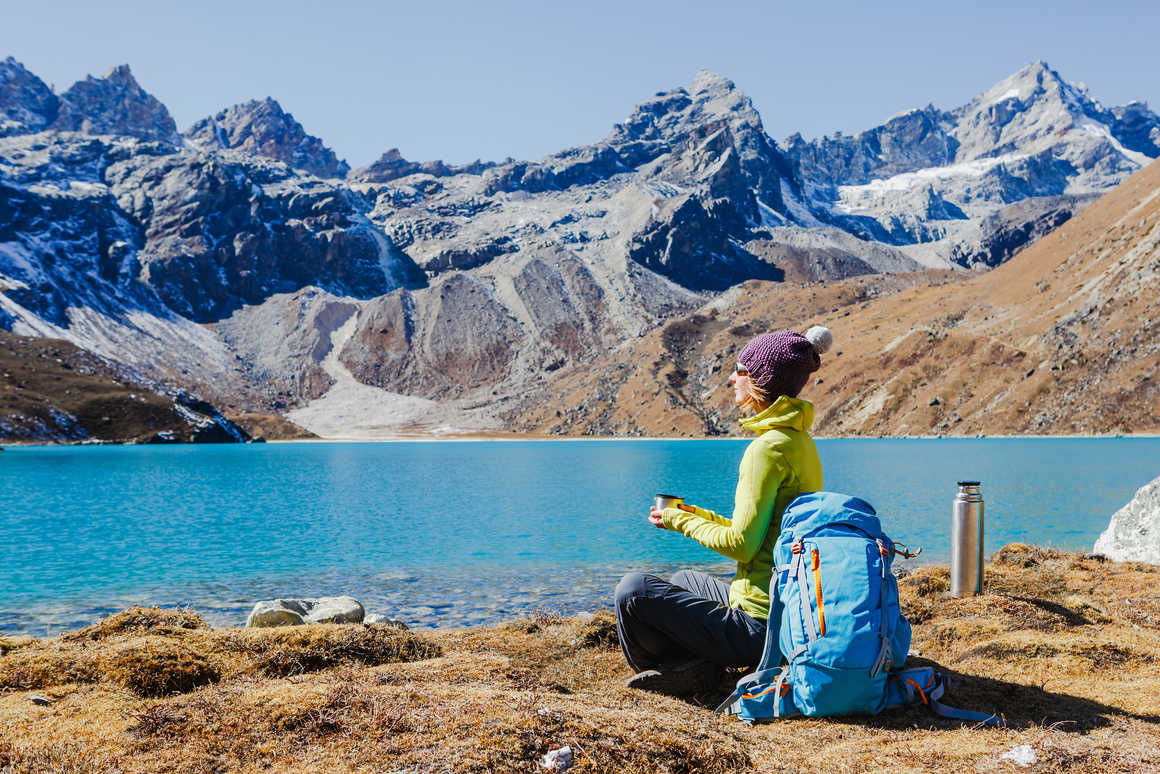
Trekking food - balancing carbs, protein, and fats at altitude
Getting the right mix of carbs, protein, and fats makes a big difference when you're out on the mountain. Carbs fuel morning activity and trail exertion, protein supports evening muscle recovery and helps you sleep, and healthy fats offer sustained energy throughout your day. Timing your macros helps optimise performance, so if you’re looking for the right food for high altitude mountain climbers, understanding these fundamentals will be essential for helping your body to adapt to the demands of elevation.
At a glance…
Carbohydrates are your main fuel source - essential for immediate energy. Consume these at every meal, but especially breakfast and lunch.
Fats provide long-lasting energy, especially useful on longer, slower climbs. Hiking snacks full of healthy fats are great.
Protein helps with muscle recovery and maintaining strength over multi-day treks. An evening meal with eggs or lentils will fuel your protein requirement at the time you need it most.
Food for adventure - traditional food in Nepal to try on your trek
Nepalese cuisine is a tapestry of diverse flavours due to the colourful mix of influences from its neighbouring (and vast) countries - India and China. The majority of the population is Hindu, followed by a significant Buddhist population. These religious beliefs encourage a predominantly vegetarian diet, and although meat consumption is common in some communities, typical Nepali food is dominated by the use of grains and legumes, with lentils and beans providing essential protein instead. Similar to many Indian dishes, fragrant spices such as cumin, ground coriander, cardamom, cloves and cinnamon take centre stage in lots of Nepali foods, while heat and depth are added with the native “timur” or Szechuan pepper. Let’s take a look at some of the typical Nepali foods that can help you maintain energy levels during your trek.
Nepali dal bhat - This is the national dish of Nepal for good reason. Consisting of steamed rice (bhat), lentil soup (dal) and an assortment of accompanying side dishes such as vegetables, curry, pickles, and yoghurt, there are numerous, delicious variations of this Nepali national food to explore. It’s not only a filling meal, but also a symbol of hospitality and warmth in Nepalese culture. “Dal Bhat Power 24 hour" is a popular Nepali saying that reflects the belief that this traditional dish provides sustained energy for a full day, especially for people engaged in physically demanding activities like trekking.
Sel roti and Momos - A beloved teahouse treat, Momos are delicious dumplings filled with minced meat or vegetables, seasoned with garlic, ginger and spices. Served either fried or steamed, they are perfect any time of day as part of a meal or alone as a snack. Sel roti is a heavenly cross between a doughnut and a bagel. Made primarily from rice flour and flavoured with sugar, cardamom and cloves, the batter is deep-fried in a ring shape until crispy and golden. Holy momo - what’s not to love? These carb heavy delicacies are best enjoyed hot, but can be wrapped and packed as a calorie dense snack for trekking too.
Tsampa – A high-energy traditional Nepalese staple, with Tibetan origins. Tsampa is ground, roasted barley flour and can be used in numerous ways, ideal for trekking. Mix it with hot yak butter tea for a delicious on-the-go energy reviver, or buy it in tsampa balls - often with nuts or dried fruit. It’s a great source of fibre and essential minerals.
Sherpa stew and Thukpa - Warming and hydrating - these stews incorporate Chinese and Tibetan influences, featuring noodles cooked in a flavourful broth with vegetables or meat (mainly yak or sheep). These comforting bowls of goodness are perfect for fueling up after a long day of mountain trekking and are staples in the Everest region.
Worth knowing - There are lots of western food options available at teahouses, and while it may be tempting to opt for one of your creature comforts such as pizza, burgers or fries, it’s common for your digestive system to become slower at altitude. Easily digestible, warm, simple meals need to become your best friends if you want to reduce your risk of gastrointestinal discomfort.
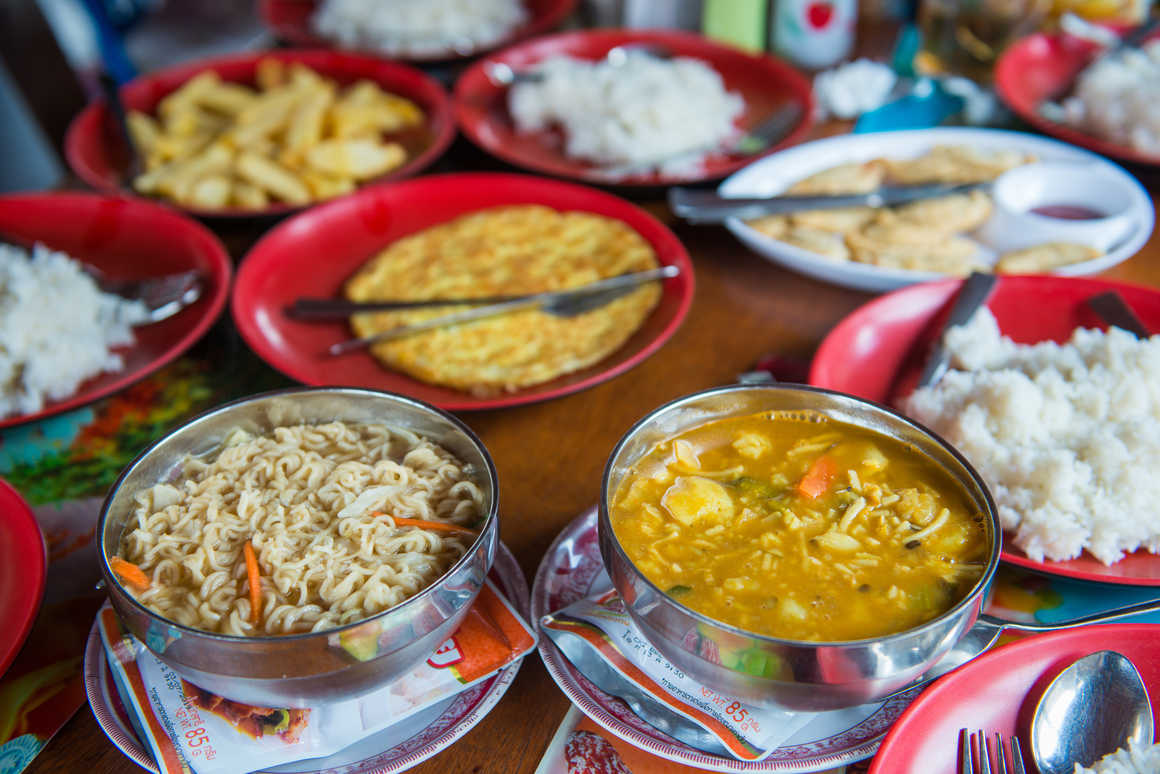
Hiking snacks to pack (that travel well)
If you want to avoid an energy slump while trekking in Nepal, pack some lightweight, energy-dense snacks. You could purchase some locally, or bring some from home, depending on your chomp of choice. Dried fruit and nuts are widely available in Kathmandu or Pokhara markets, so if you know you love to nibble on these during a trail, buy locally. Roasted soybeans (Bhatmas) are also local, protein-rich, crunchy nuggets of goodness that you can buy pretty much anywhere in Nepal.
Is there such a thing as altitude sweets? Not really, and because refined sugar can cause energy spikes and crashes, which can be problematic when adjusting to high altitudes, we advise exercising caution around consumption. But if sugar is your thing when hiking (and let's face it, who doesn’t need the occasional quick sugar boost while in the mountains) get your hands on some Chaku - a Nepali confection, traditionally made from concentrated sugarcane juice, jaggery, ghee, and nuts. It is known for its chewy, stretchy texture and satisfies that sugary urge. Jaggery has health benefits too!
Prefer to stick with what you know? Bring some energy and protein bars from home but avoid anything that can melt, crumble or make a mess, as this just isn’t fun when eating on the move.
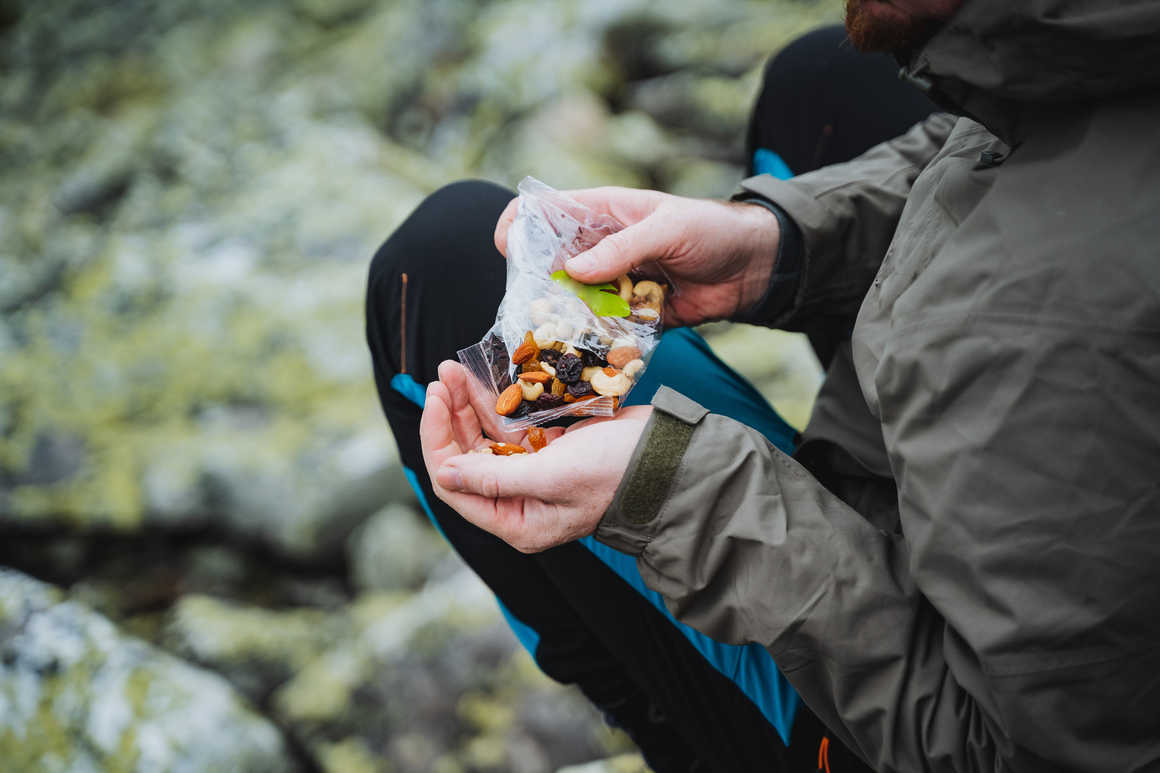
Staying hydrated at altitude
Staying hydrated is critical at high altitudes, where dry air and extensive exertion are a fast track to fluid loss. We advise aiming to put away at least 3-4 litres of water daily. You’ll want to drink whilst walking, so invest in a good hydration bladder or wide mouth water bottle. If you know you sweat a lot or have concerns around mineral loss, you can add electrolyte tablets to replace lost salts. Warm drinks like masala chai, butter tea, or seabuckthorn juice (a local drink that is naturally rich in good vitamins for high altitude) can boost hydration and comfort levels - especially when the temperatures drop. We wouldn’t advocate drinking alcohol at high altitude due to its dehydrating capability, and suggest limiting caffeine because of its diuretic properties.
Trekking tip: Ginger tea is a great high altitude flatulence cure. Yes, it’s a thing. If you know, you know!
Example meal and snack plan for a typical trekking day
When the going gets tough on a trek, sometimes all you can think about is when the next snack break is coming and how soon you can eat again! Keeping your energy up at altitude means grazing like a mountain goat with a meal plan. Here’s a no-fuss, trail-tested day of eating that’ll keep your legs moving and your mood above sea level.
Breakfast: Porridge with honey or eggs and chapati, plus masala tea
Morning snack (on the trail): Roasted soybeans, dried fruit and nuts
Lunch: Dal bhat or vegetable noodle soup at a tea house
Afternoon snack: Energy bar, dried fruit and chaku, hot butter tea with tsampa
Dinner: Sherpa stew, thukpa and momos, or rice and lentils
Before bed: Ginger tea or seabuckthorn juice to rehydrate and wind down
Eating little and often helps keep energy steady and spirits high!
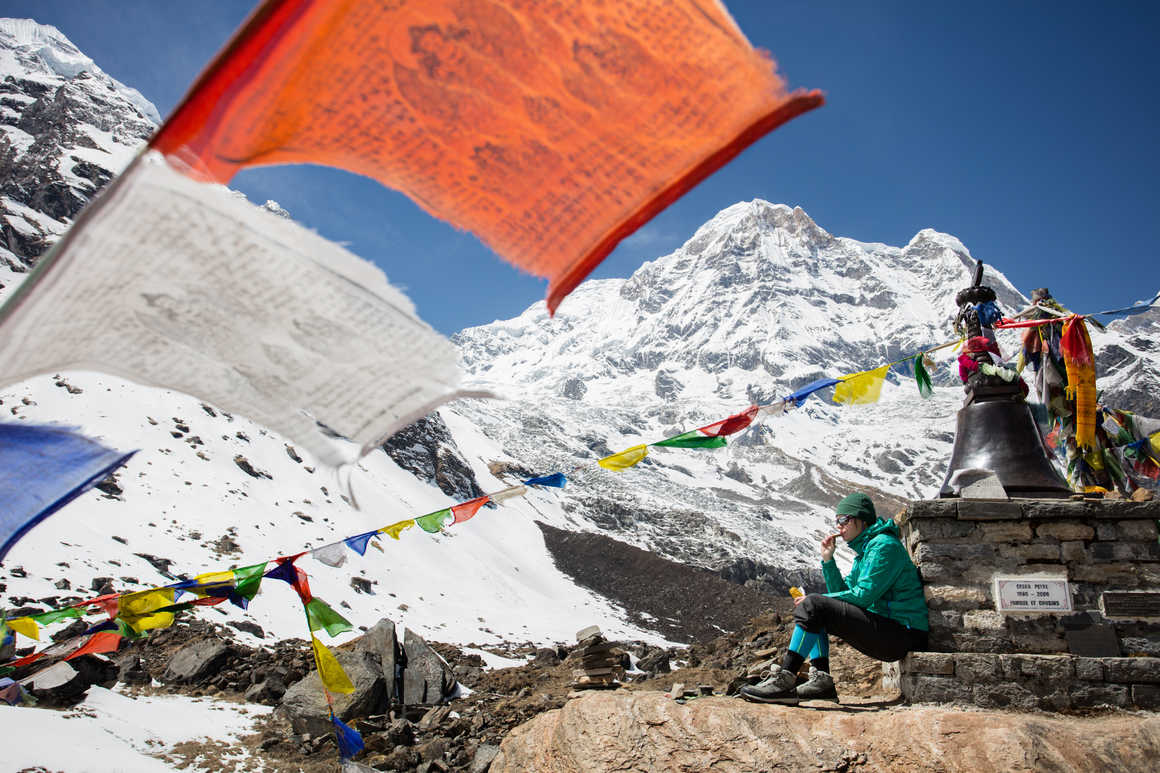
Mount Everest Food Hacks for a Greener Trek
Food and snacks are fuel, but how you pack and buy them matters too - for the planet and the people along the trail. If you plan on having items like dried fruit, nuts, trail mix or bhatmas, get them in bulk at the markets and store in reusable containers or cloth bags to cut down on waste. Avoid single-use plastics like crisp packets and bottled water, and opt instead for refillable bottles, a water bladder, reusable cutlery, and beeswax wraps.
On the trail, you’ll find tea houses and small village markets where you can top up on essentials like eggs, fresh fruit, and basic snacks. It’s worth knowing that the higher you go, the more things cost, since everything has to be carried up.
That said, whenever possible, buy from local vendors. You’ll be supporting the community and spreading your tourist money in the right places. Just be mindful that food can be scarce in remote villages, so avoid hoarding anything beyond what you personally need, and try to share the resources thoughtfully, where possible.

Kandoo Adventures - trek, hike and camp food advice from those in the know
We’ve trekked the trails, hit all the walls, and yes - perhaps eaten more dal bhat than we can count. So at Kandoo, we know that when it comes to fuelling your body in the Himalayas, the right nutrition can make your experience. Whether you’re preparing for Everest Base Camp, Mera Peak, or something gentler like Annapurna, eating well is just as essential as training at high altitudes. If you want expert guidance on planning your meals, managing energy levels, joining a guided trek in Nepal, or just need to appease your worries about how to combat altitude sickness, get in touch - we’re always happy to share our trail-tested tips (and maybe a few snack recommendations too).
